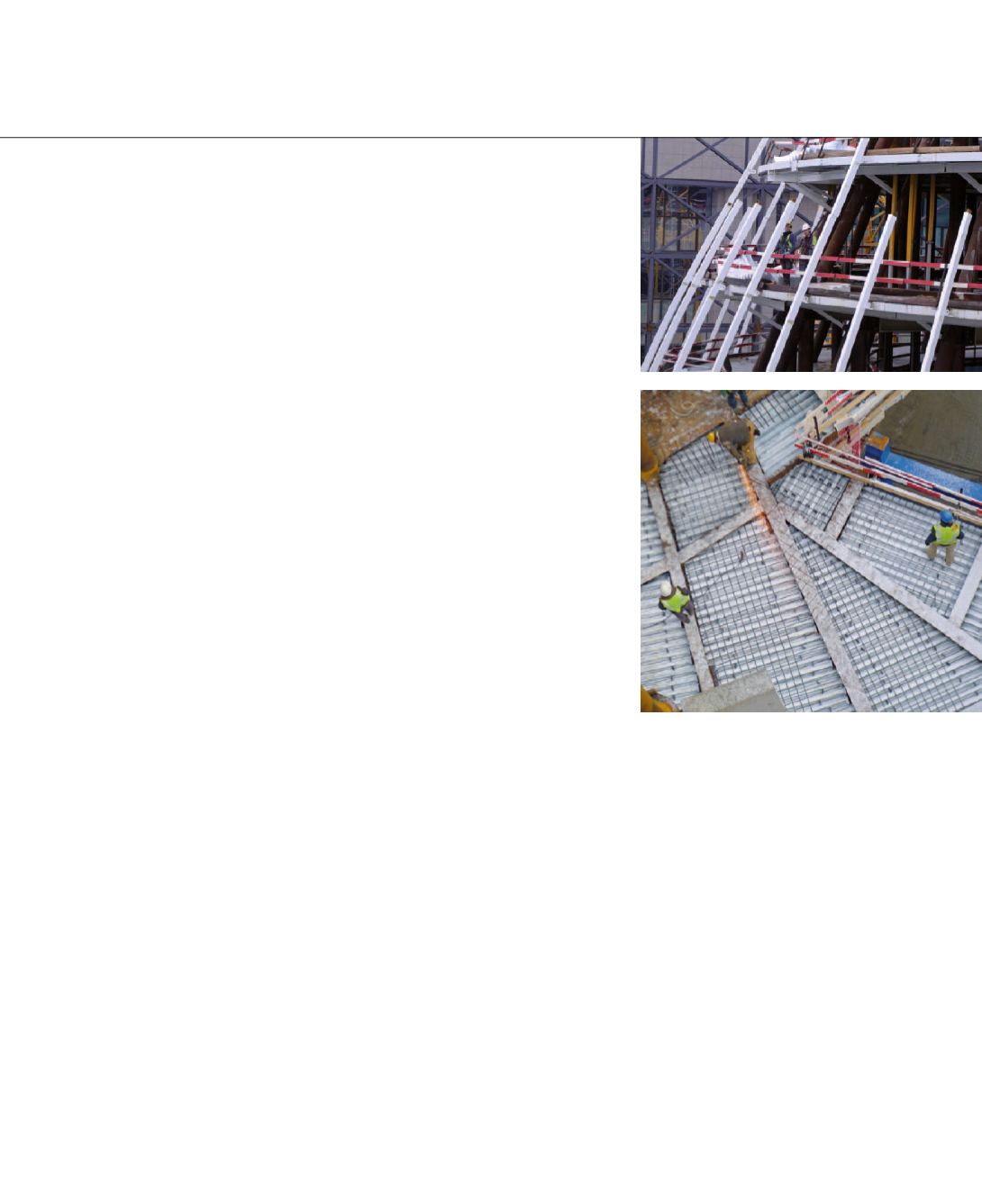
186
EUROPA
2013.11.19
2013.03.29
Lastly, the fourth phase (ACO). The longest one and the one whose budget rep-
resents 10 times that of the preceding phase. But nothing could be undertaken
without the previous operations, which revealed unknown pollution, led to ini-
tially unexpected works. The foundations have to be reinforced, further piles
poured. Underpinning works, carried out with discernment, provided precious
archaeological information: the moulds for the scrolls embellishing the moulded
frieze installed under the cornice of the
Résidence Palace
were mixed up with
the earth and embankment work debris, having been used for the foundation
screeds in the old building. It is difficult to untangle the intertwined logic of the
three or four sub-sites operated simultaneously in this ACO phase: that of the
lantern, the most spectacular and the most complex one; that of the new internal
façades one, one straddling the railway tunnel, the other used as a support and
link between the lantern and the
Résidence Palace
; the old building itself whose
façades have been restored and a completely renovated span: double glazing
but in window frames with an old appearance; wrought-iron railings; woodwork,
floors, light reflectors in the windows, interior tweaking. On the same day as my
visit (21 September 2012), the stability of the new structures was discussed (a
5,000-ton metallic structure, half of the total weight of the Eiffel Tower), as well
as the colour nuances for the facing in blocks of faux stone for the tall walls of the
old façades. The completion deadlines and the rescheduling of the construction
steps were also discussed.
The power of architecture lies in its constructive vocation and its relationship with
the most universal functions of social life– living, educating, caring, trading, gov-
erning – as well as with the institutions that represent them in the public space.
Nonetheless, with Europa, the architectural site cannot be reduced to the mere
theatre of construction; it is the mirror of another construction, in the image of
the institution that the new building will house. In its architectural, ingenious
and creative way, the new headquarters of the European Council symbolise the
expansion of this exceptional political creation that is the unification year after
year of the continent’s nations within the European Union. The difficulties, slow-
ness, even conflicts, are those of a work in progress, carried by the will of its
artisans and an intuition for the goal to reach. What goal? This “constructivist”
– and dangerous – kinship between artistic creation and political creation has
probably been forgotten today: the urgency is that of a peaceful revolution, its di-
rection imposed by the resolution of successive crises, but the goal itself remains
uncertain, as it is the continuum of action will what reveal what the goal is. The
countries of the European Union are rushing to a form of political union without
precedent, they are encouraged to do so based on the desire to guarantee ac-
quired civil peace after decades of extreme violence; guided by the conscience
of new configurations of power in which the development and emancipation
of the contemporary world force it to enter. In fact the Europa site is located
on the institutional site itself; its vocation would be to end up in a flagship build-
ing, symbol of European executive power and of the political influence that is
expected of it.
WORK IN PROGRESS


